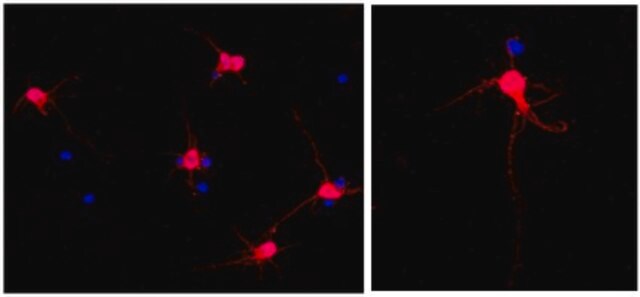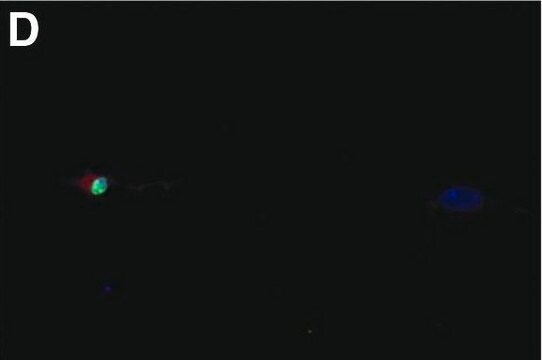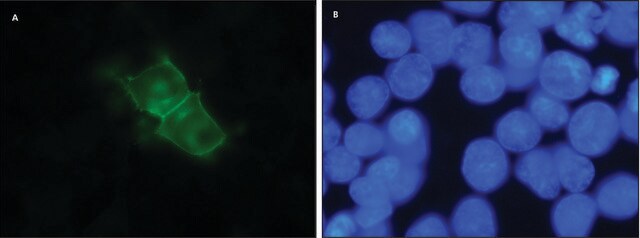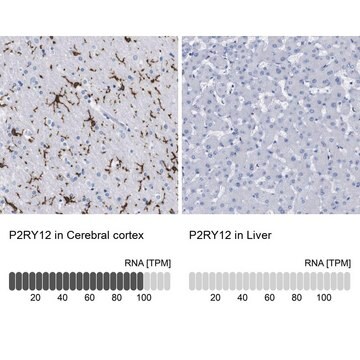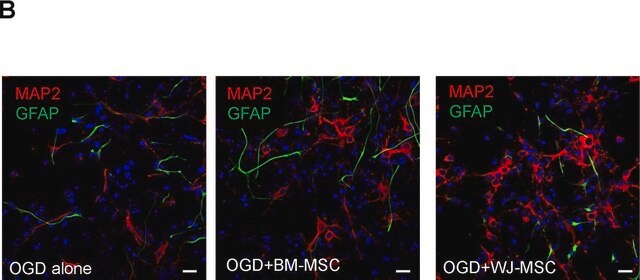MAB3418X
Anti-MAP2 Antibody, Alexa Fluor™ 488 conjugated
clone AP20, Chemicon®, from mouse
Synonym(s):
Anti-MAP-2, Anti-MAP2A, Anti-MAP2B, Anti-MAP2C
About This Item
Recommended Products
biological source
mouse
Quality Level
conjugate
ALEXA FLUOR™ 488
antibody form
purified immunoglobulin
antibody product type
primary antibodies
clone
AP20, monoclonal
species reactivity
rat, human, chicken, mouse, bovine
manufacturer/tradename
Chemicon®
technique(s)
immunohistochemistry: suitable
isotype
IgG1
NCBI accession no.
UniProt accession no.
shipped in
wet ice
target post-translational modification
unmodified
Gene Information
chicken ... Map2(424001)
human ... MAP2(4133)
mouse ... Map2(17756) , Map2(281294)
rat ... Map2(25595)
Specificity
MAP-2 is a stringent marker for neurons. In addition, MAP-2 displays intracellular specificity. In the central nervous system, MAP-2 is confined to neuronal cell bodies and dendrites. There are exceptions, however, where some axons stain positive for small amounts of MAP-2 (2,3). MAP-2 is uniformly distributed throughout the cell when first expressed in cultured neurons but becomes selectively localized as dendritic development proceeds (4,5).
SDS-PAGE Profiles: In SDS-PAGE MAP-2 from adult rat migrates as a closely associated doublet having a molecular weight of approximately 300 kD. However, early in brain development (postnatal day 10 in rats), MAP-2 migrates as a single band that is identical to the lower molecular weight band of the adult MAP-2 doublet (MAP-2b). Later in development (postnatal days 17-18), the mobility of MAP-2 changes to the adult doublet form. (In the spinal cord, conversion to the adult form occurs earlier).
Immunogen
Application
Optimal working dilutions must be determined by end user.
APPLICATION NOTES:
Immunohistochemistry: Anti-MAP-2 can be used to stain tissue (brain or spinal cord) fixed with paraformaldehyde.
Neuroscience
Neuronal & Glial Markers
Neurofilament & Neuron Metabolism
Physical form
Storage and Stability
Analysis Note
Brain, Neuronal culture, Human glioblastoma T98G cells
Other Notes
Legal Information
Disclaimer
Unless otherwise stated in our catalog or other company documentation accompanying the product(s), our products are intended for research use only and are not to be used for any other purpose, which includes but is not limited to, unauthorized commercial uses, in vitro diagnostic uses, ex vivo or in vivo therapeutic uses or any type of consumption or application to humans or animals.
Not finding the right product?
Try our Product Selector Tool.
Storage Class Code
12 - Non Combustible Liquids
WGK
WGK 2
Flash Point(F)
Not applicable
Flash Point(C)
Not applicable
Certificates of Analysis (COA)
Search for Certificates of Analysis (COA) by entering the products Lot/Batch Number. Lot and Batch Numbers can be found on a product’s label following the words ‘Lot’ or ‘Batch’.
Already Own This Product?
Find documentation for the products that you have recently purchased in the Document Library.
Customers Also Viewed
Articles
Derivation and characterization of functional human neural stem cell derived oligodendrocyte progenitor cells (OPCs) that efficiently myelinate primary neurons in culture.
Our team of scientists has experience in all areas of research including Life Science, Material Science, Chemical Synthesis, Chromatography, Analytical and many others.
Contact Technical Service